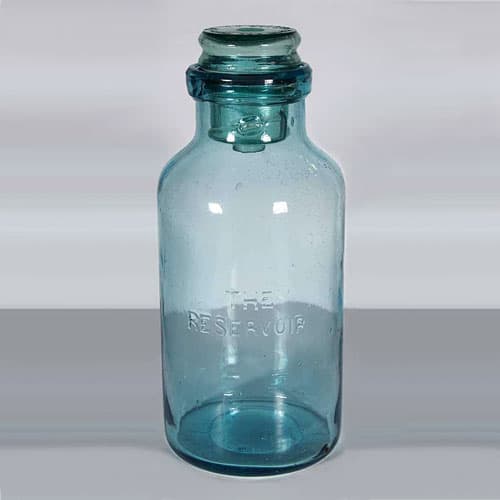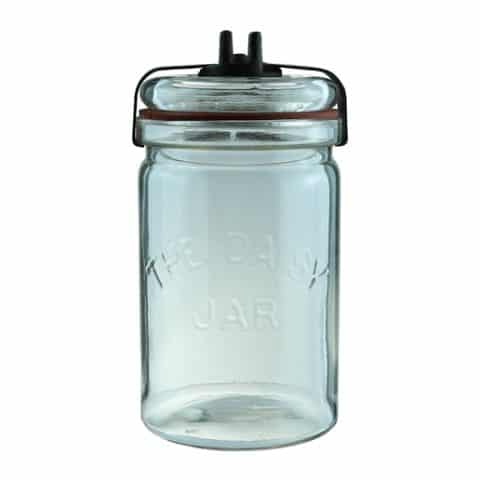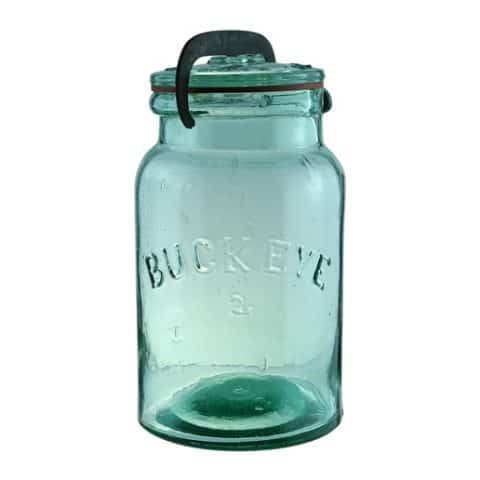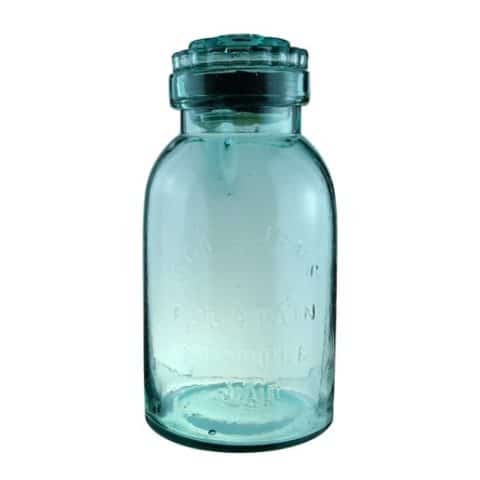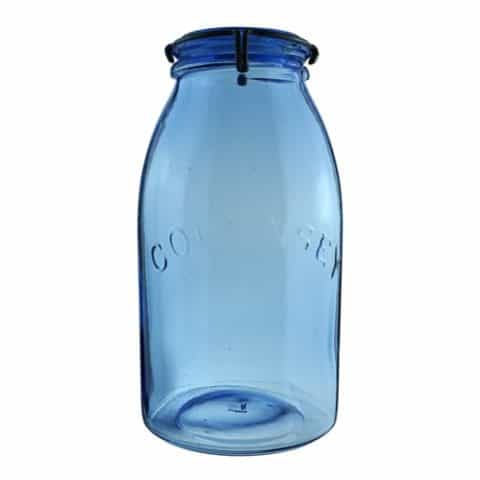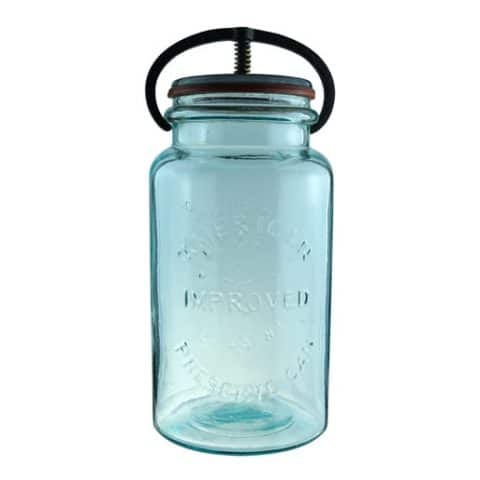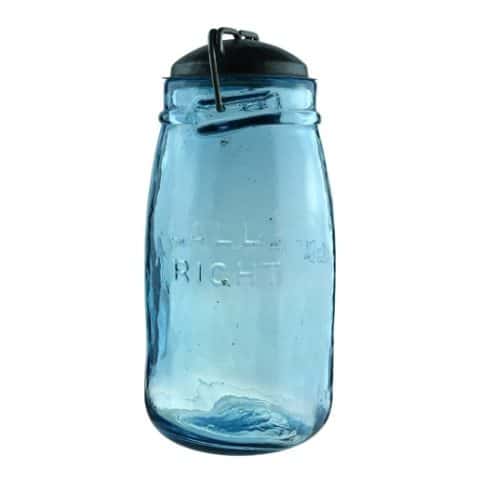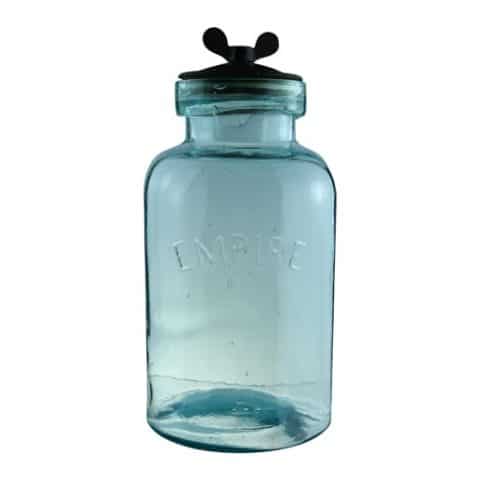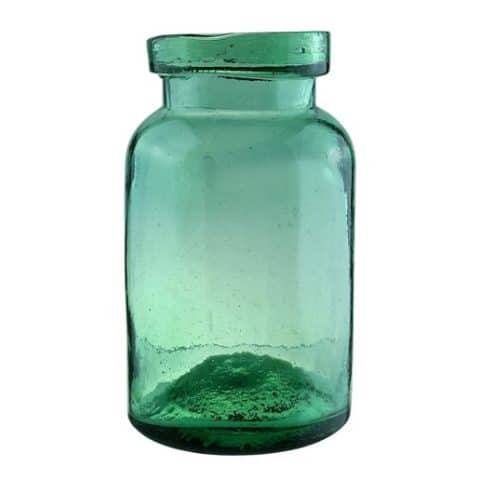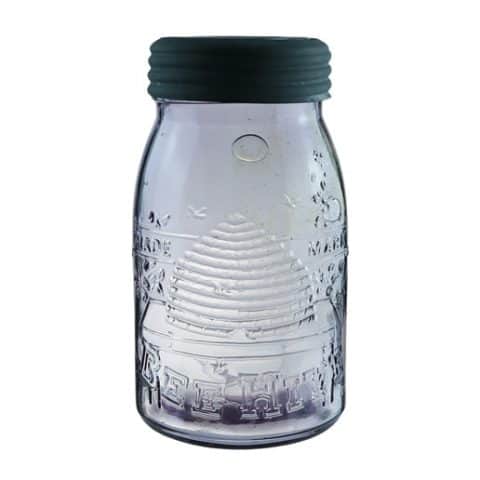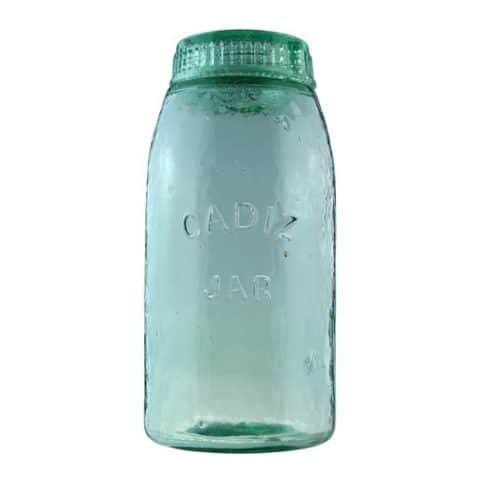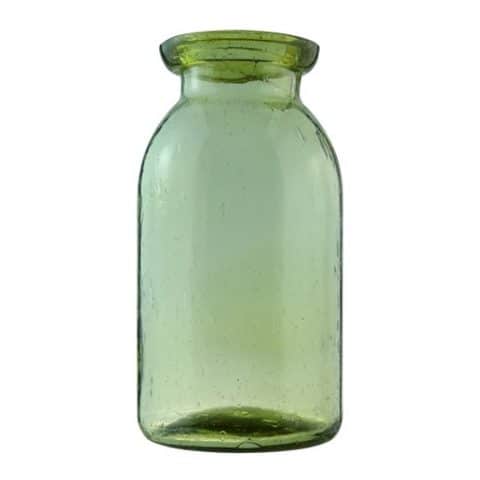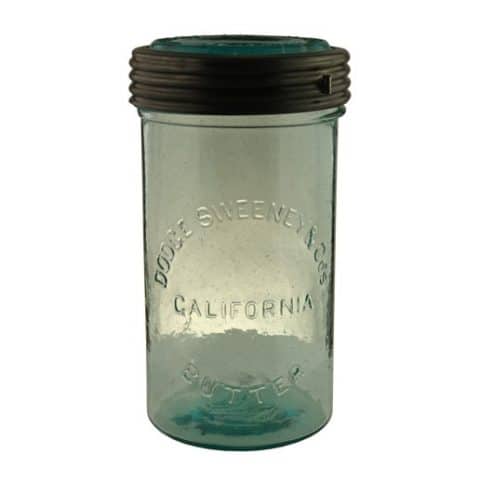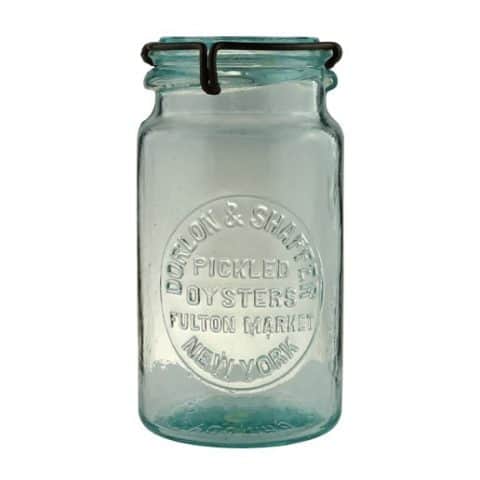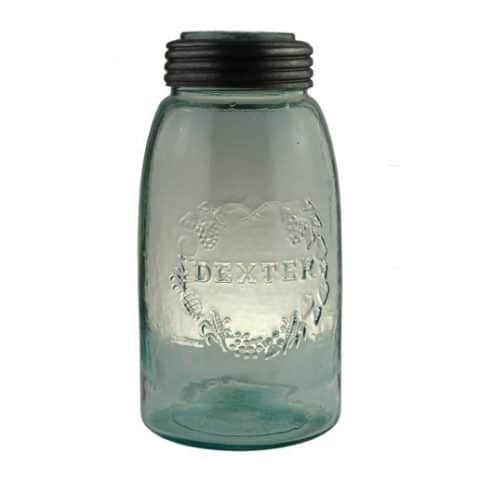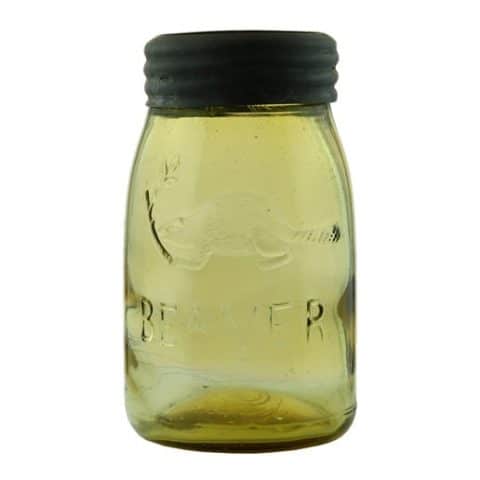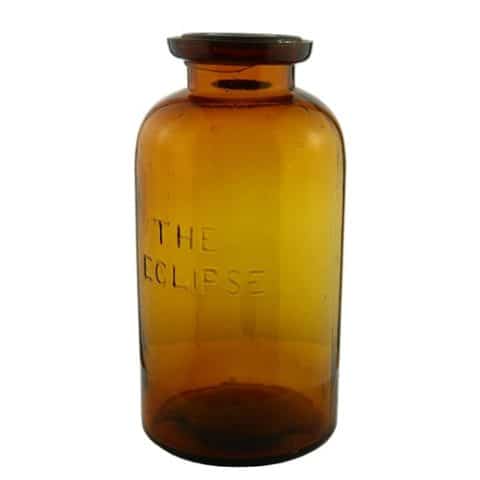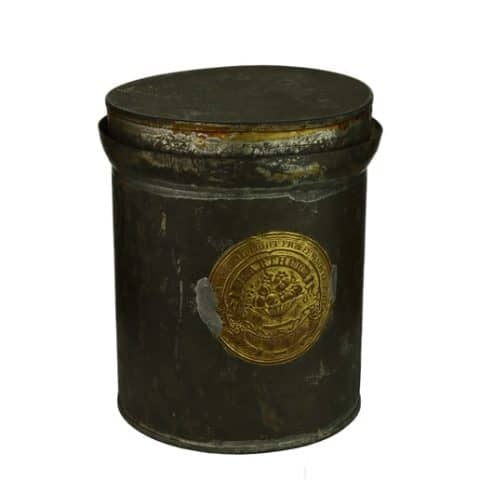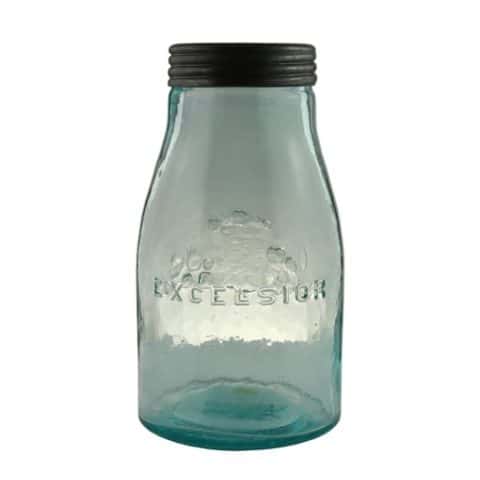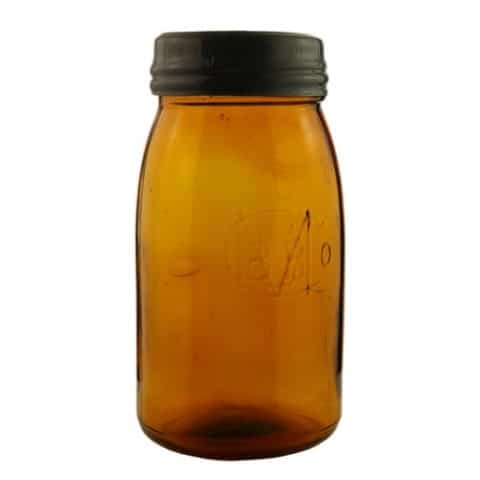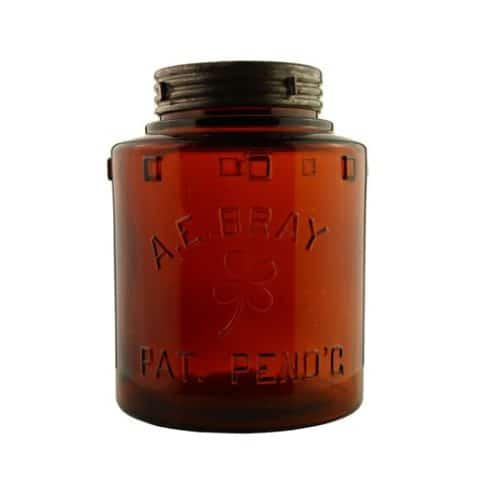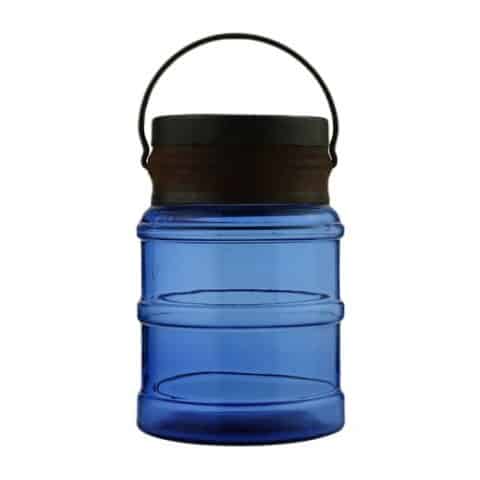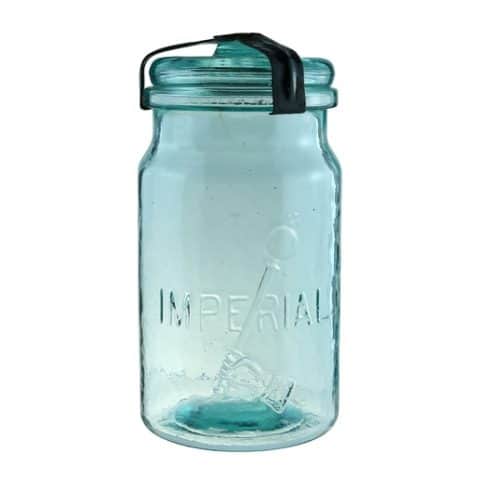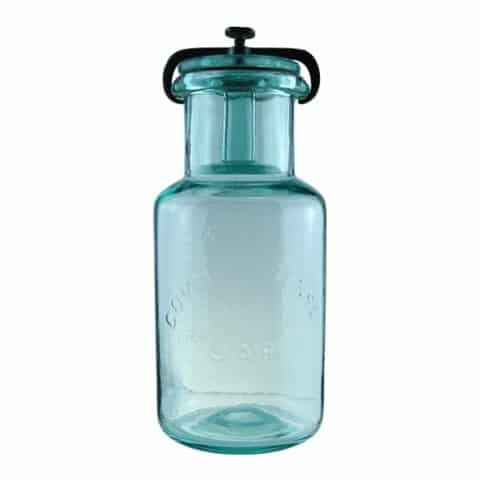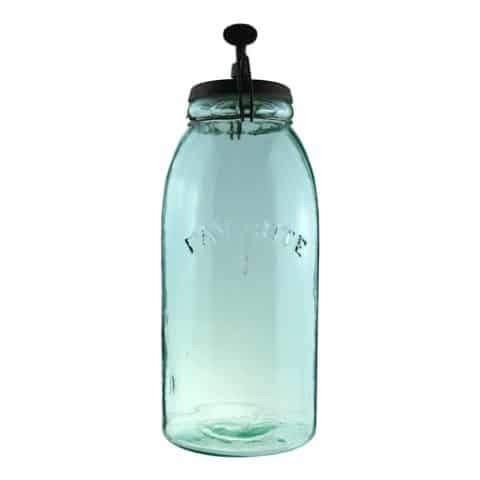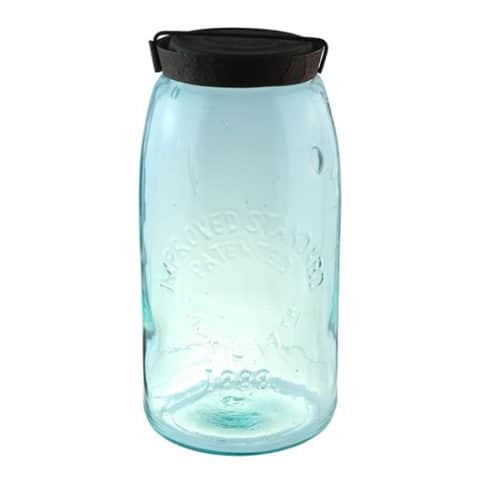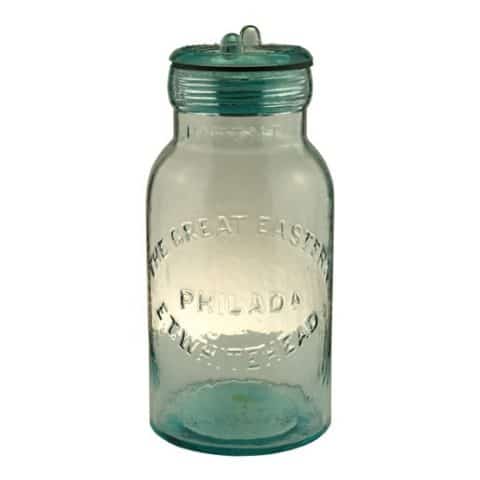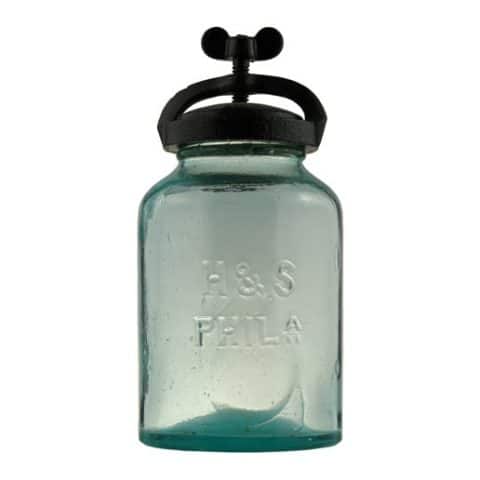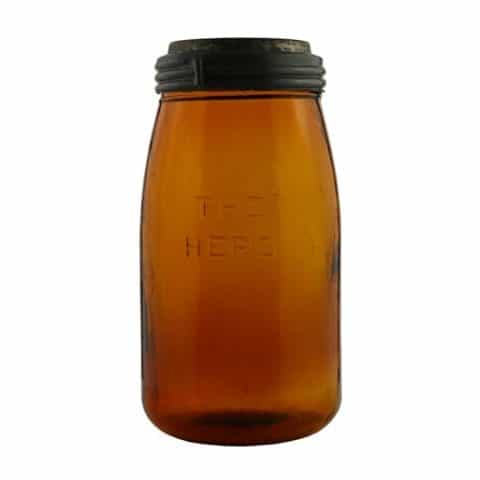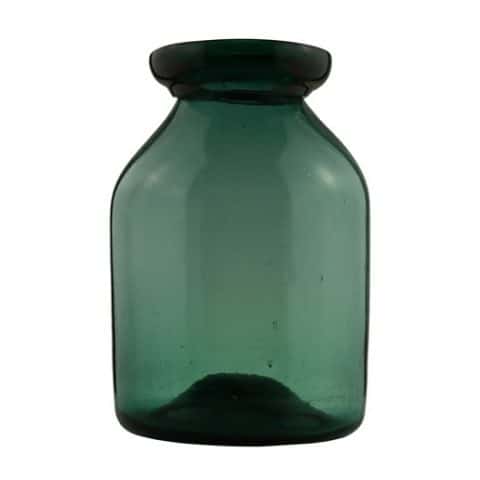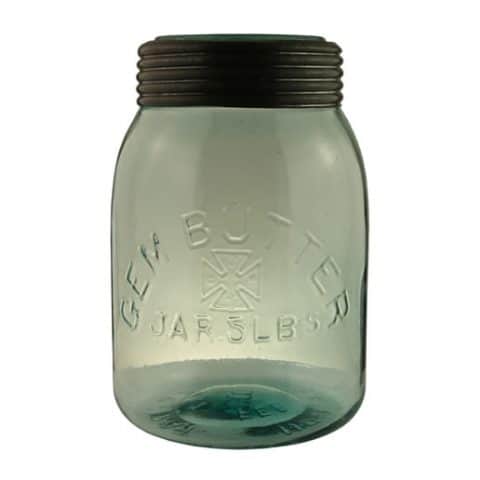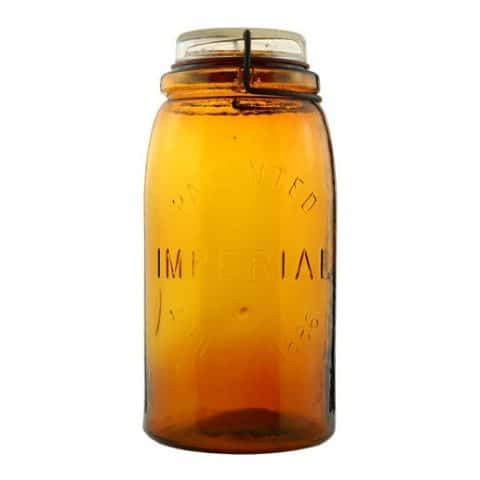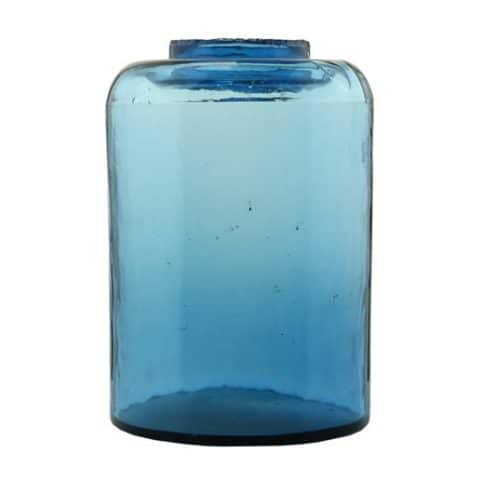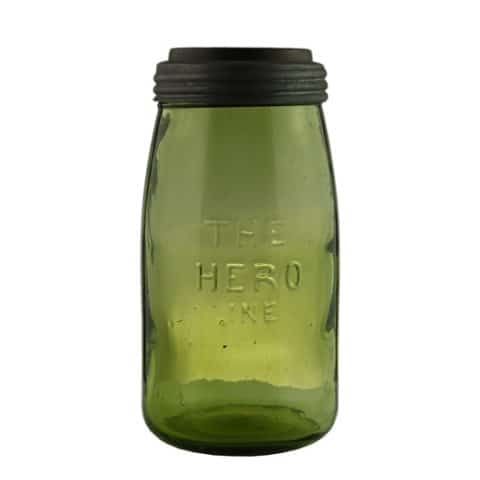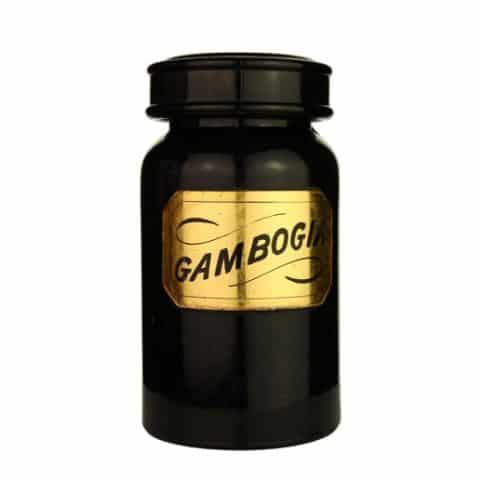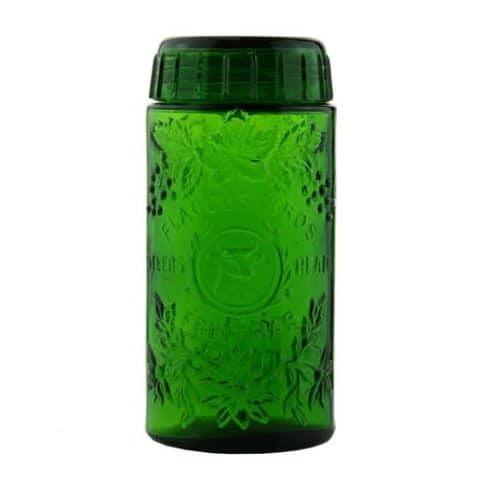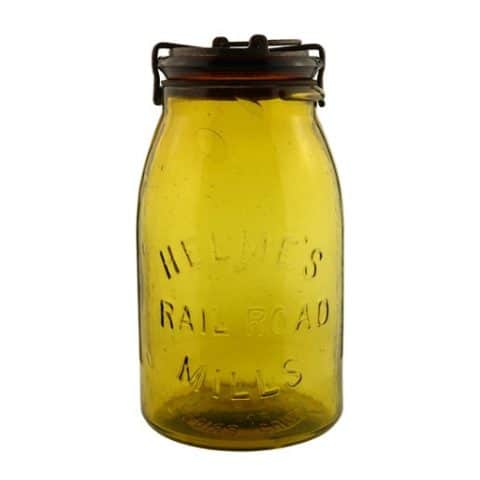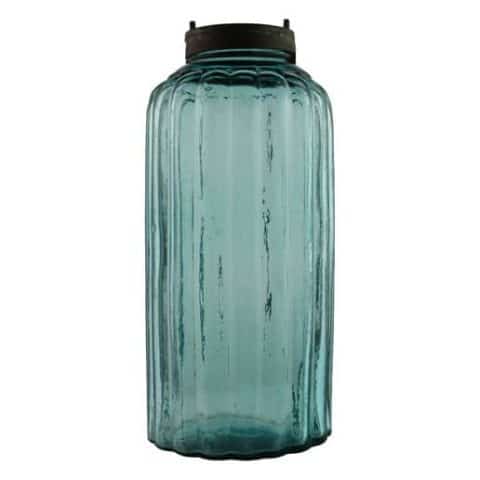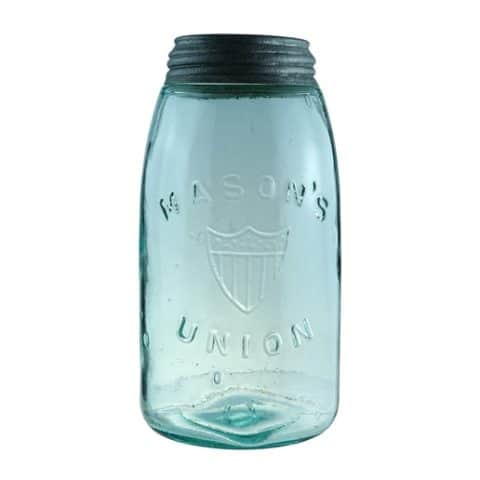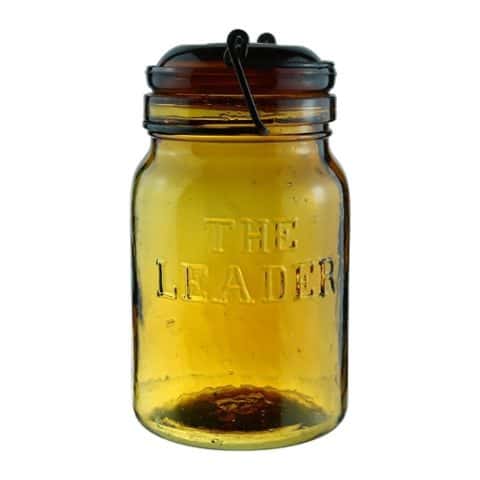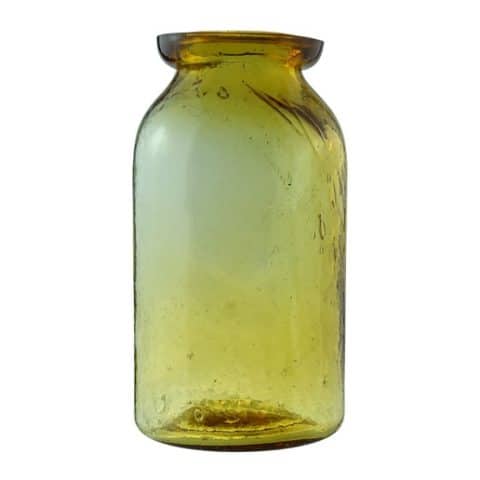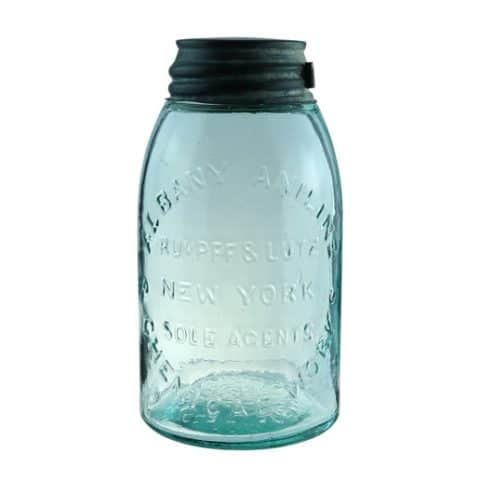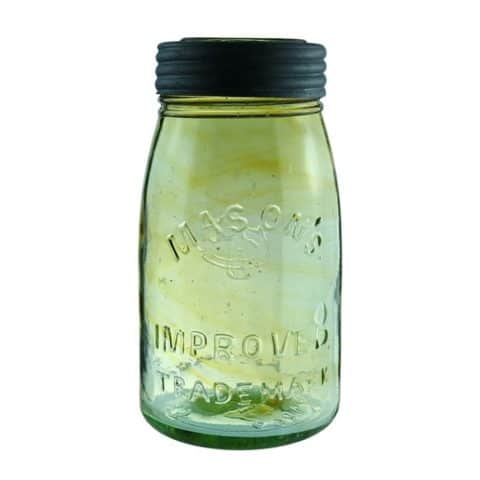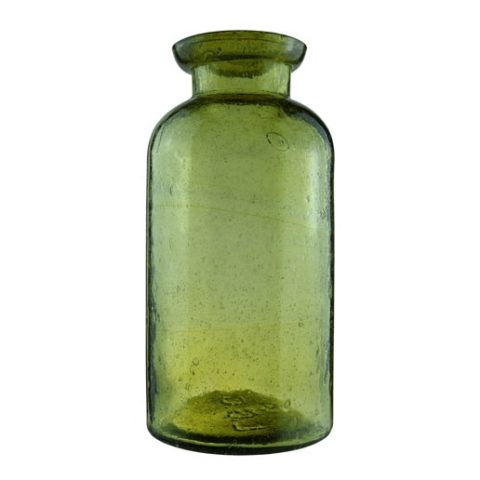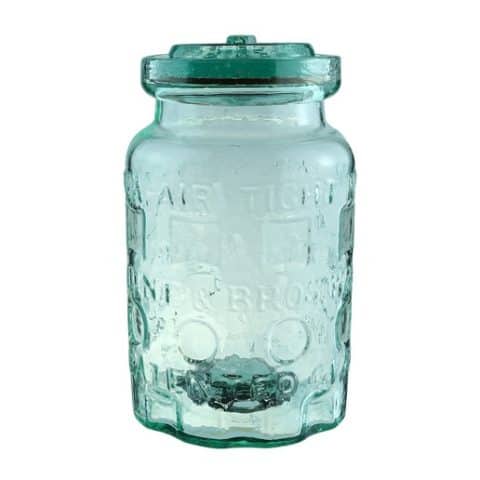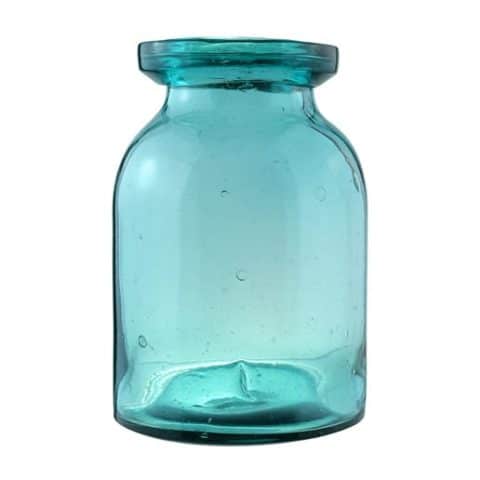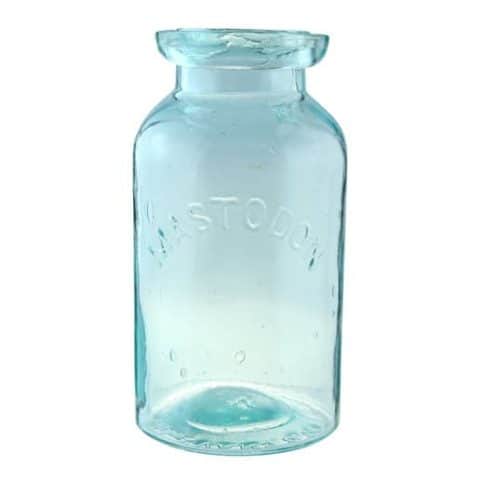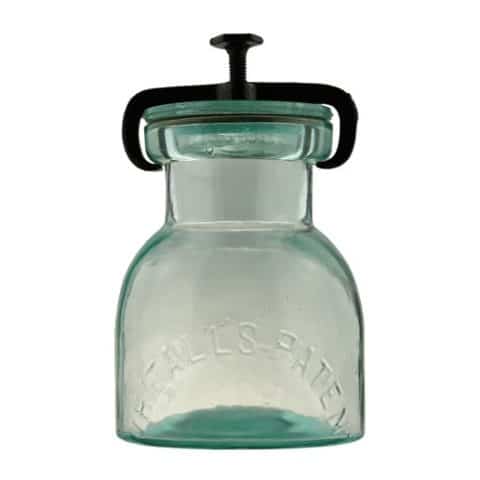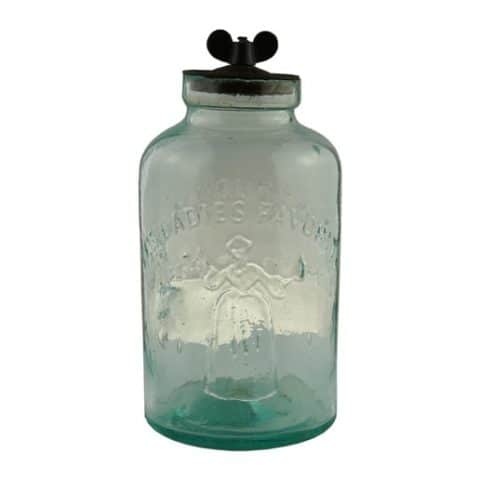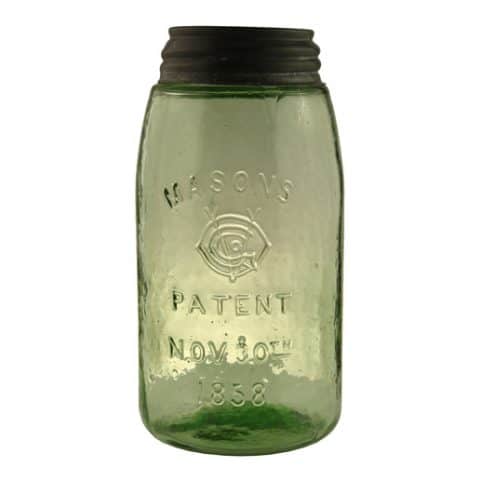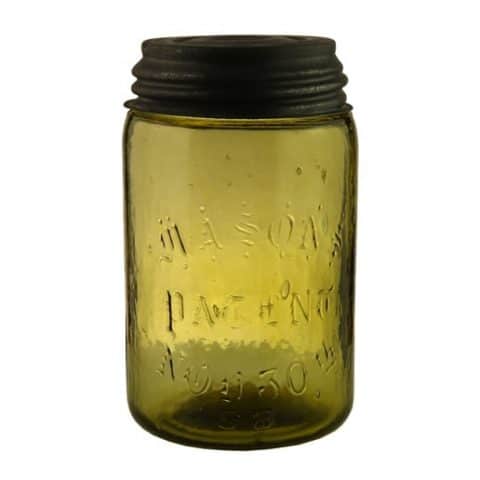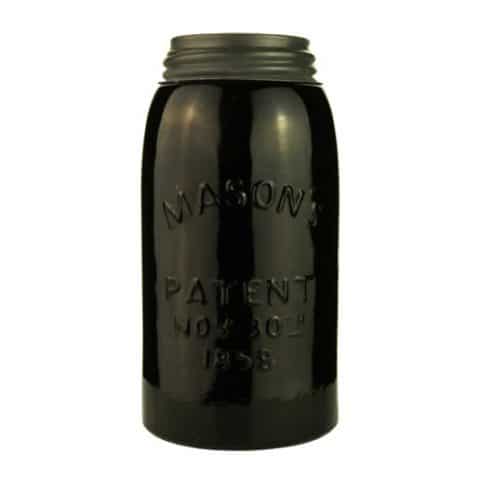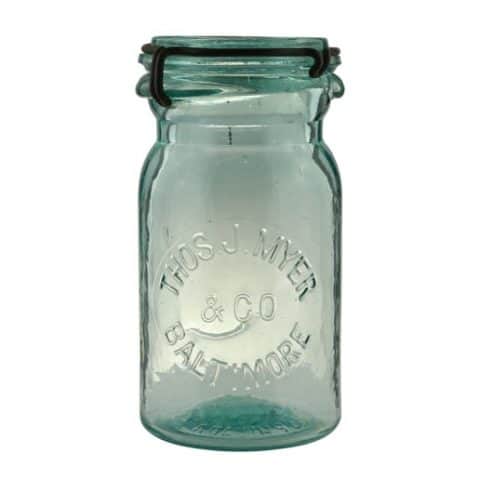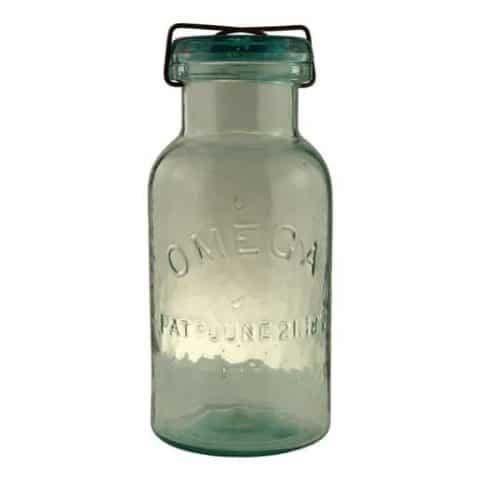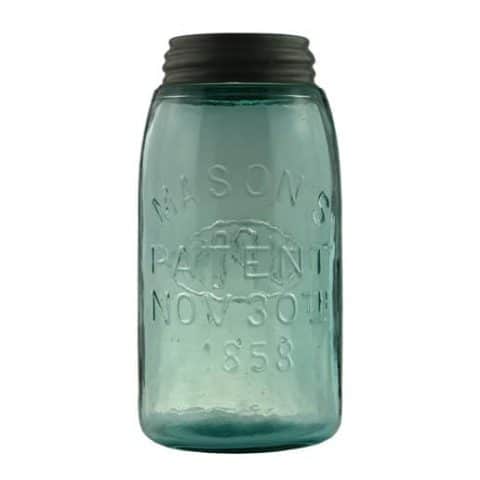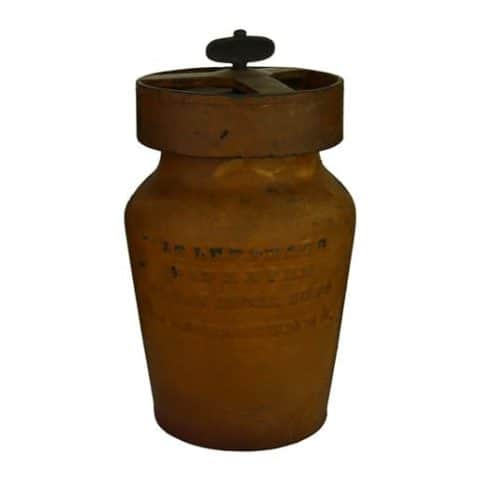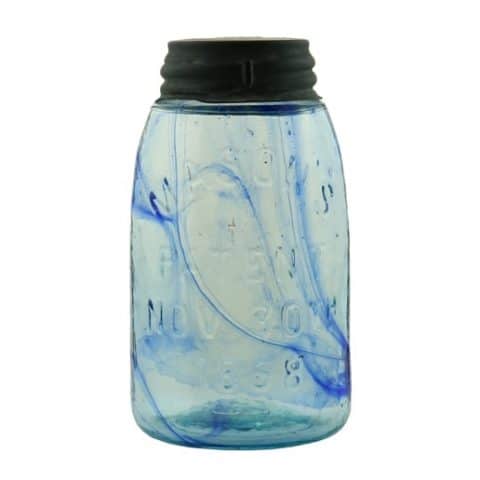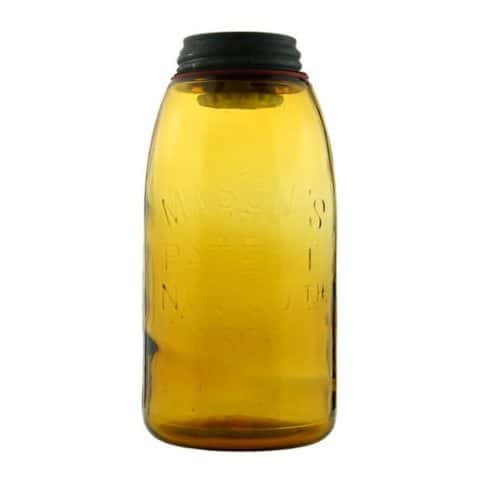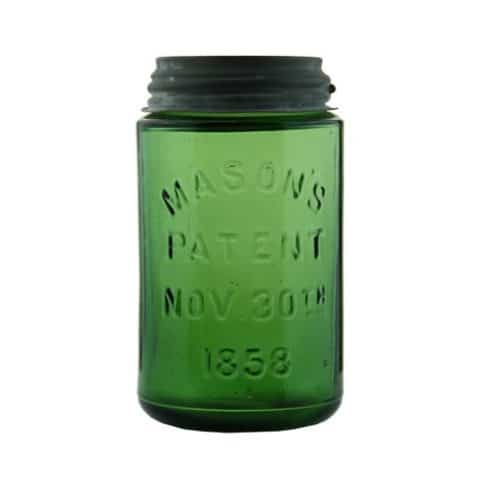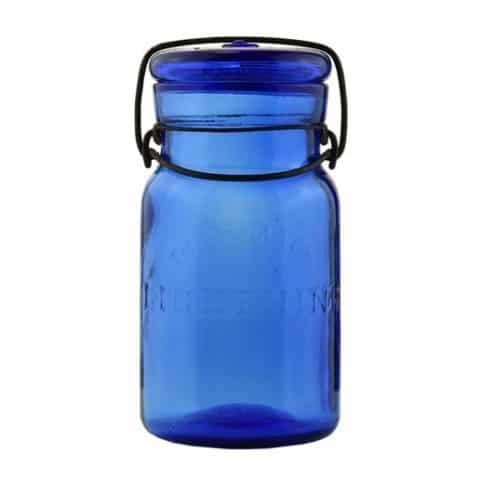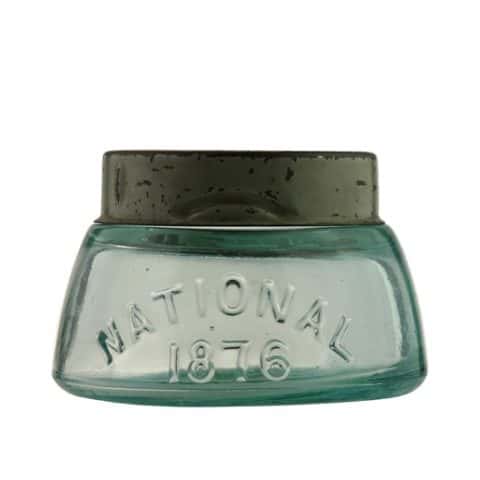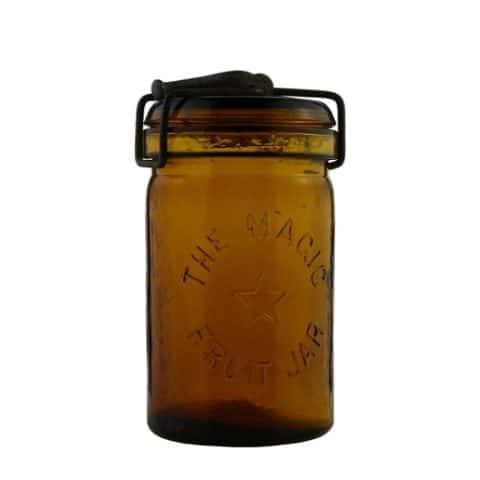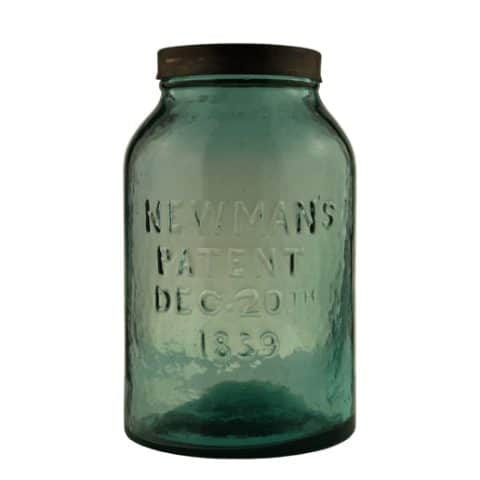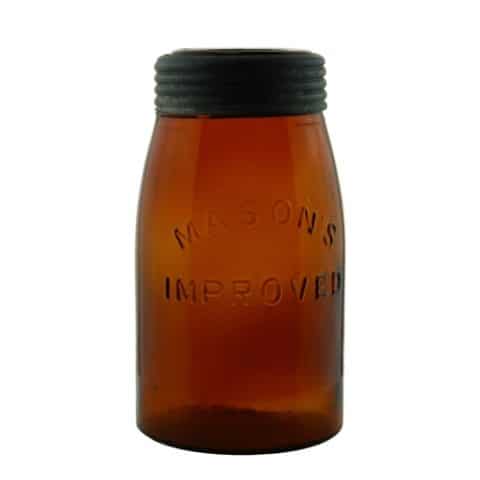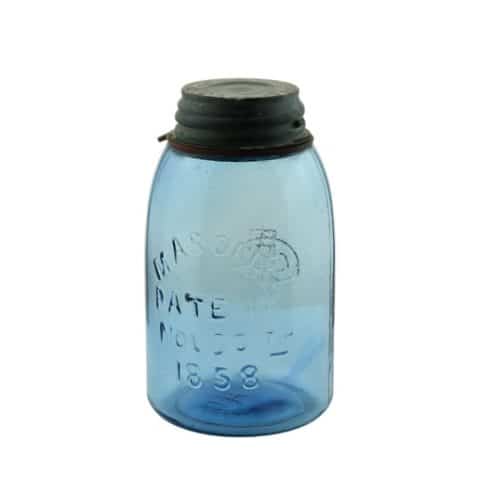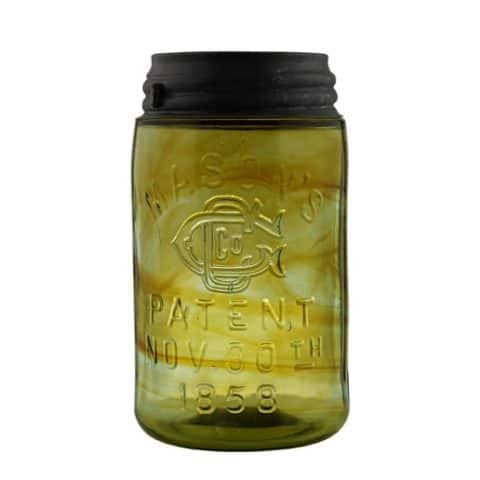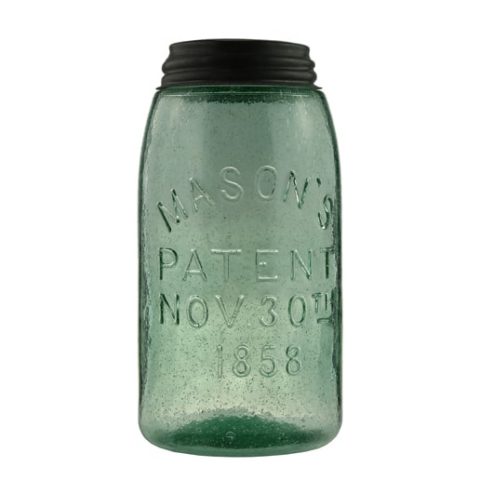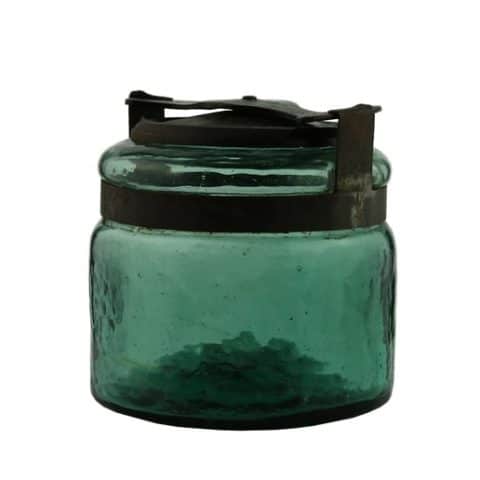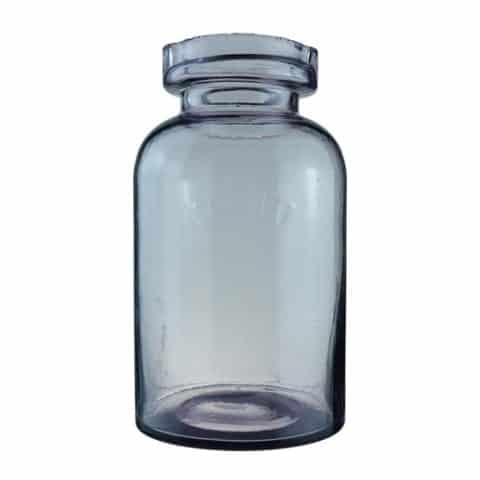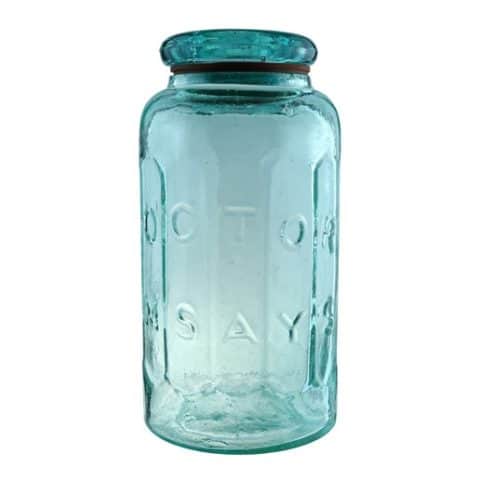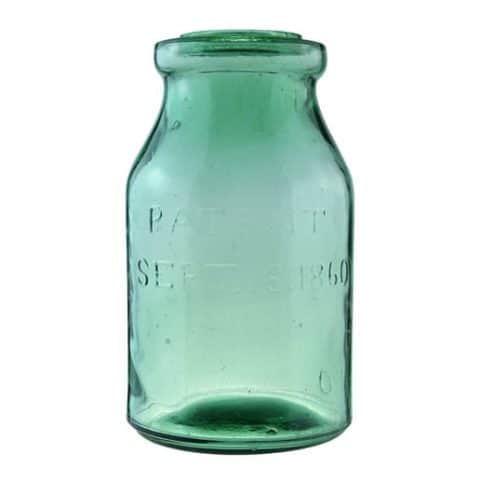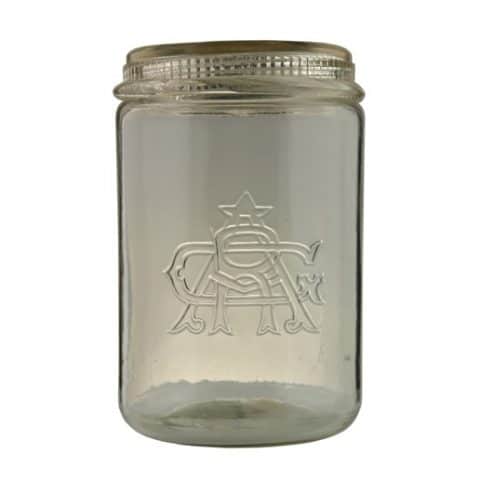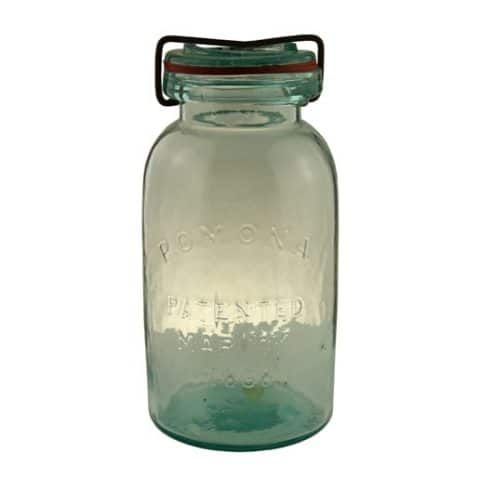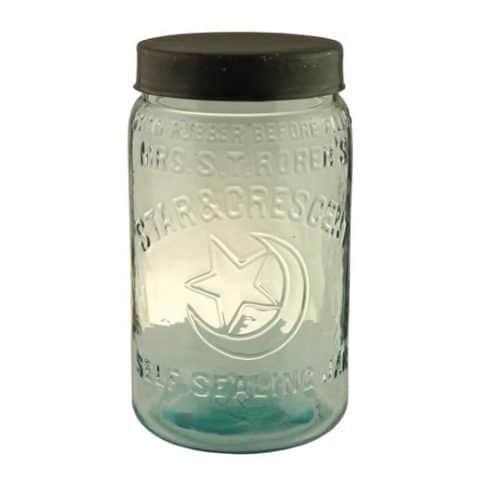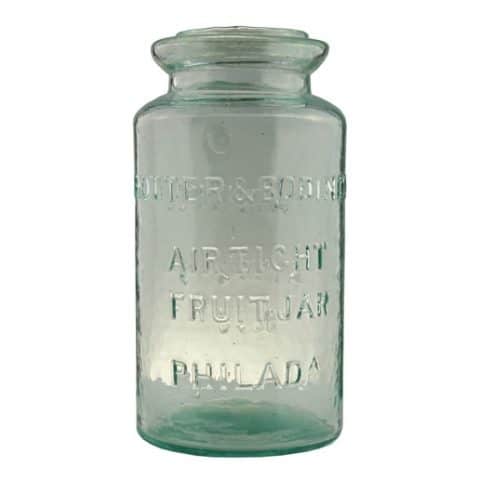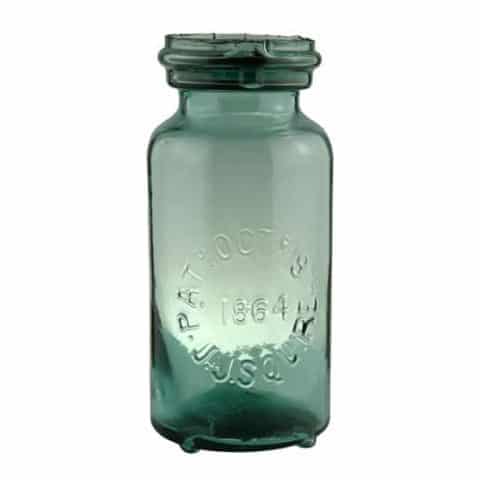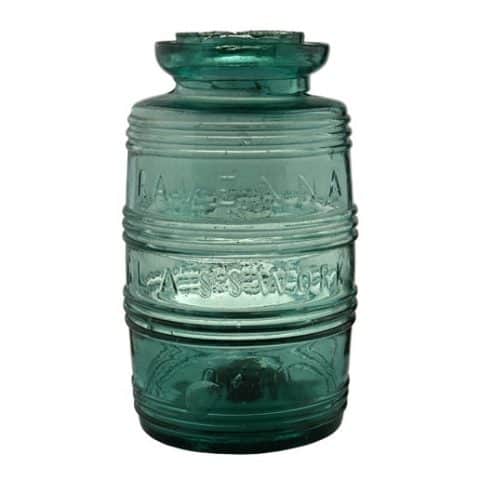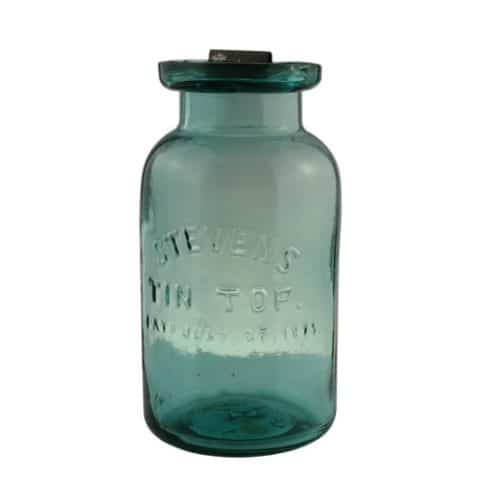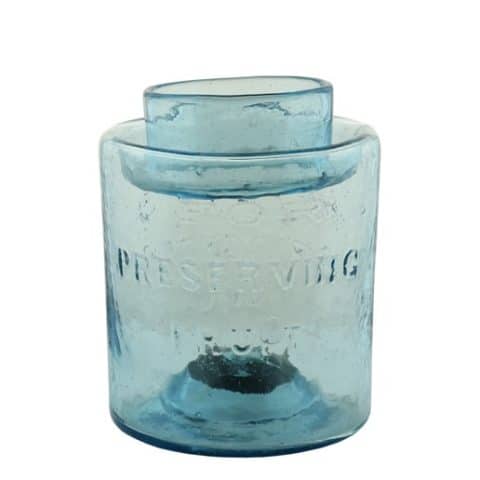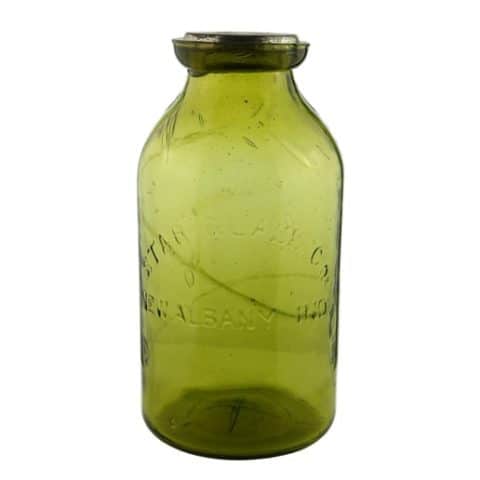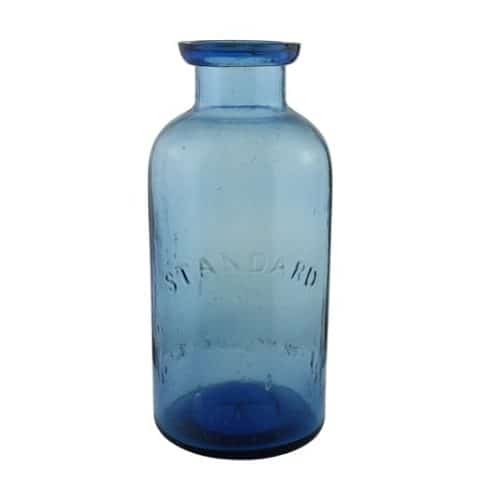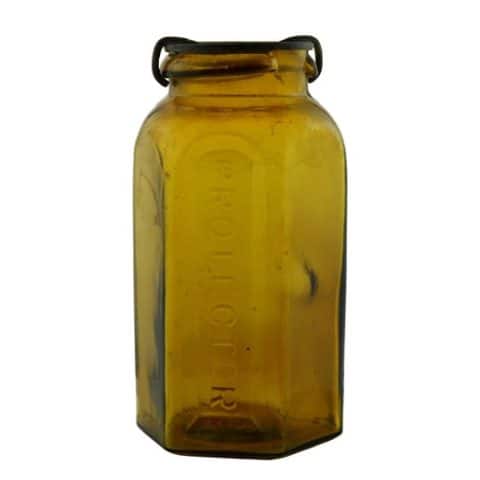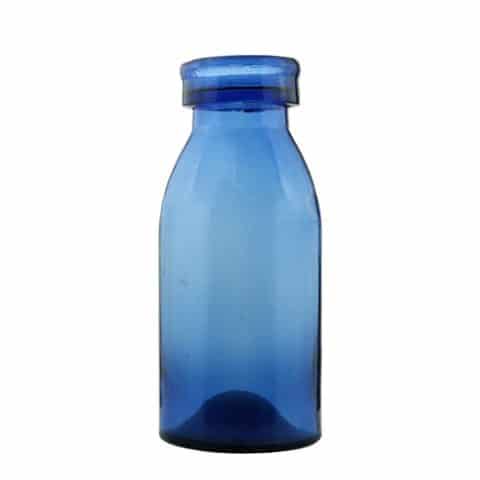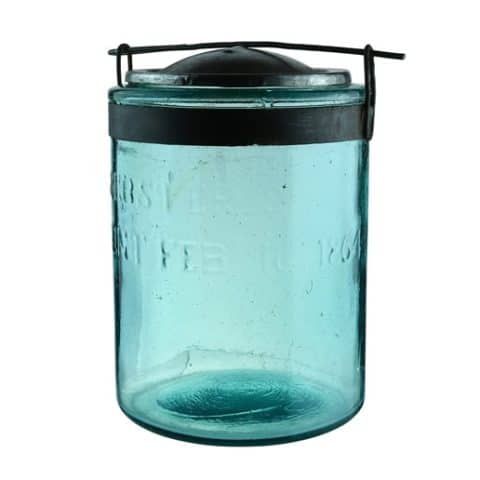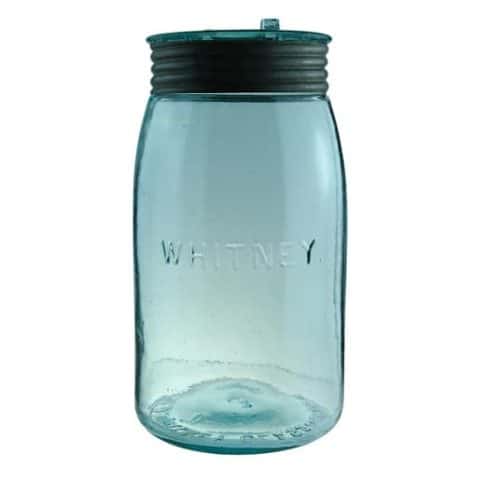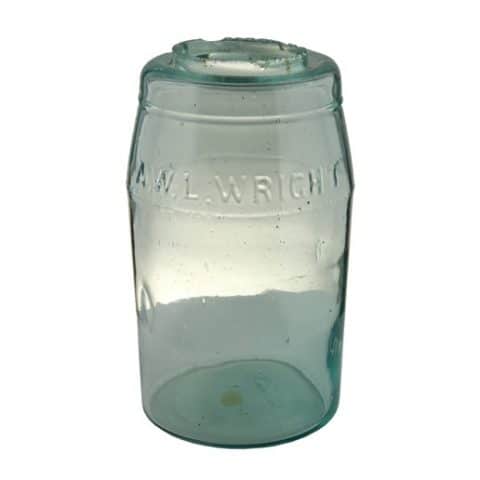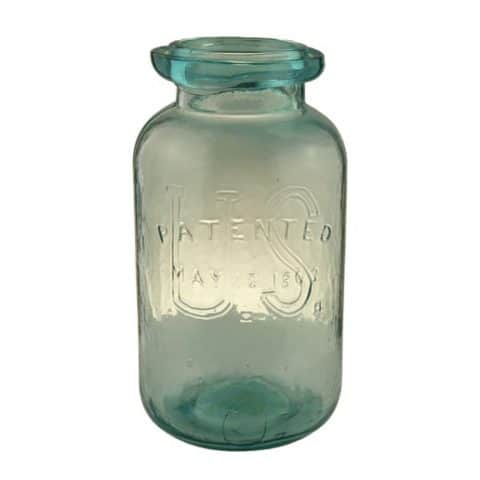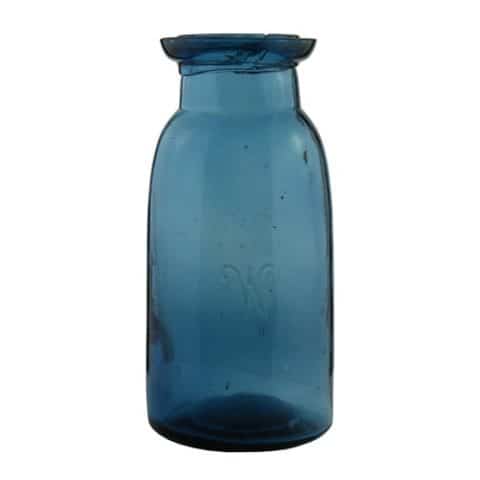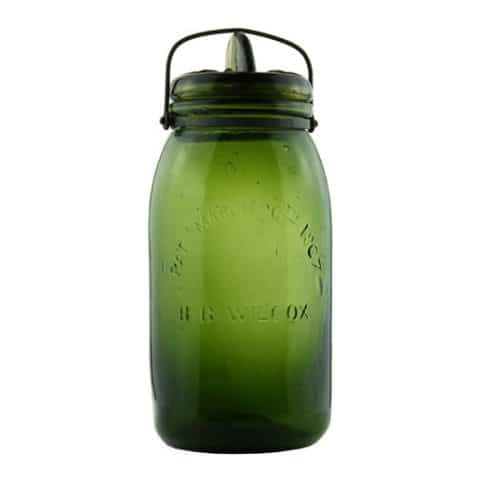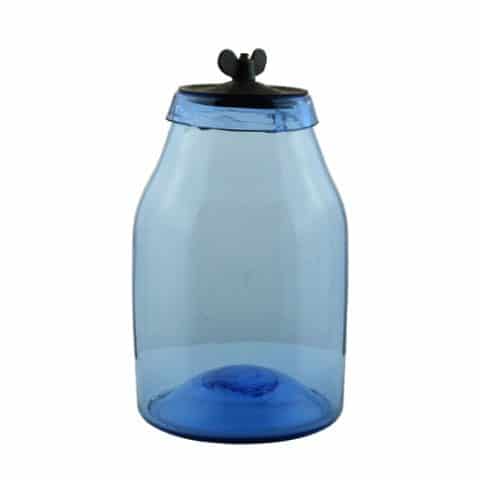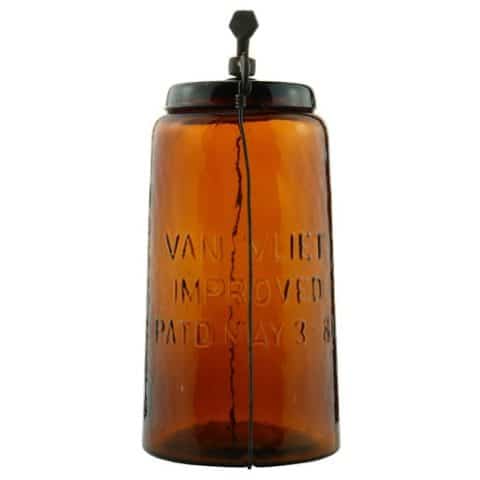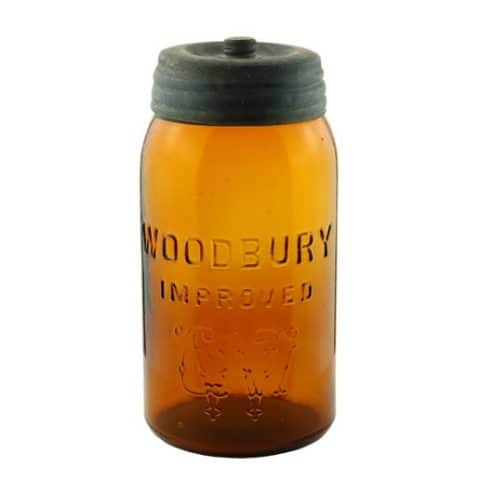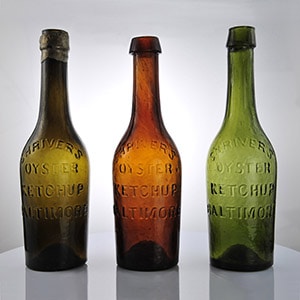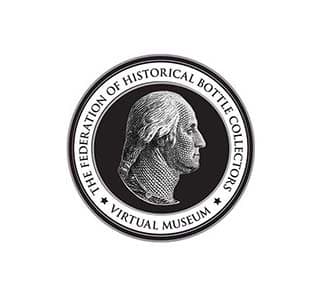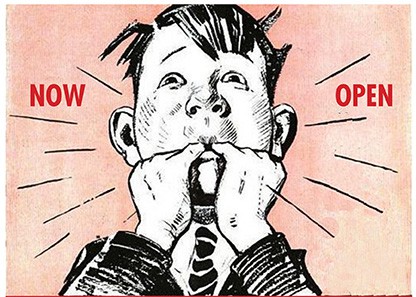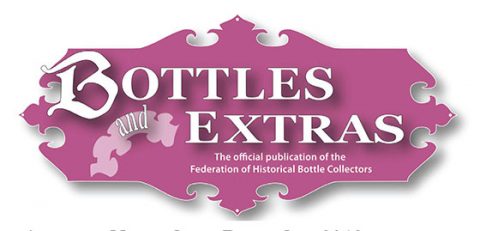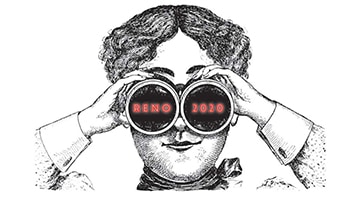The Reservoir
The Reservoir
Mrs. E. G. Haller, Carlisle, Pennsylvania
Wm Frank & Sons & Cunningham & Imhsen, Pittsburgh, Pennsylvania
Aquamarine Quart
Provenance: Jerry McCann Collection

Here is an interesting fruit jar that has a somewhat complex patent closure. The aquamarine glass quart jar is embossed ‘THE RESERVOIR’ on the face of the glass container. The base can be embossed ‘Wm. FRANK & SONS PITTS’ or ‘C & I’. The stopper is embossed ‘Mrs G. E. HALLER PATD. FEB.25.73’.
Breaking this down, the patentee of the fruit jar on February 25, 1873, was Ella G. Haller of Carlisle, Pennsylvania. It looks to be a mistake on the stopper as the initials “G. E” were used instead of “E. G” for Mrs. Haller. She received Patent No. 136,240. The jar was made somewhere in the neighborhood of 1873 and 1874 by either of two companies. The first was William Frank & Sons of Pittsburgh, Pennsylvania, and the second was Cunningham & Ihmsen, also of Pittsburgh.
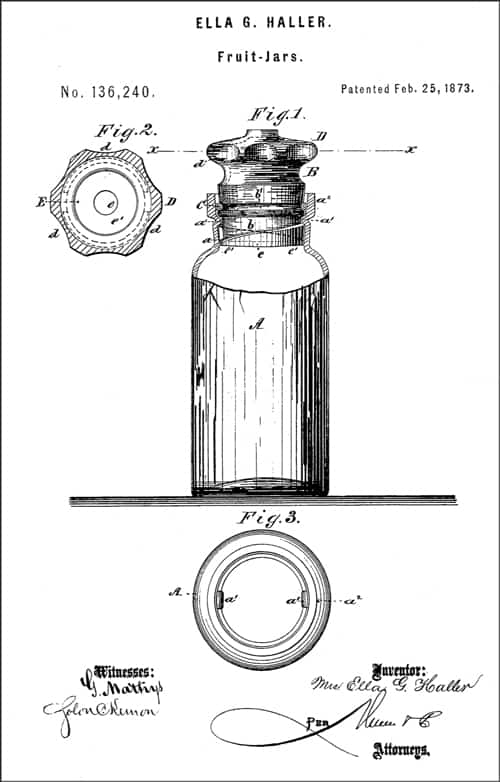
The jar is hand-blown, tooled, and has an applied collar. It can be found in quarts and half-gallons. The closure consists of a hollow glass stopper and gasket. The stopper has a hole in the bottom center and two inclined grooves on the side to engage two lugs inside the neck of the jar. The hollow stopper is a reservoir for hot syrup that would fill the empty space formed at the top of the jar as the contents shrunk in cooling. Obviously, this process dictated the jar name.
William Haller, of Carlisle, Pennsylvania, had a number of patents related to jars but The Reservoir fruit jar patent was registered by Ella D. Haller of Carlisle, Pennsylvania. The coincidence between the last name and both residing In Carlisle can not be ignored. It is virtually certain that Ella was the wife of William though records are scarce. It also seems to be too coincidental that she was also an inventor of a jar closure. Although we will probably never have the full story, it is likely that William Haller wanted to make sure that A. R. Samuel (or a later employer) did not claim the patent. See the H & S (Haller & Samuel) Philadelphia jar in the museum. Although Ella may have been a very capable woman, William had the history of inventing jar closures. However, Ella’s 1873 patent was very different from William’s 1870 patent or any of his earlier ones. Alternatively, William may have died, leaving Ella with a marketable invention.
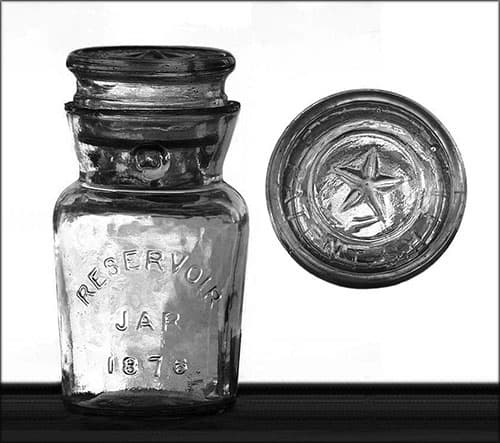
The Reservoir jar was also used as a promotional souvenir for the 1876 Worlds Fair Centennial Exposition in Philadelphia, Pennsylvania. The jar was advertised by the maker as being the “world’s smallest fruit jar.” You could purchase it empty or with one oyster preserved in it.
Primary Image: The Reservoir Jar imaged on location by Alan DeMaison, FOHBC Virtual Museum Midwest Studio
Support Images: Lot 9919: THE RESERVOIR blue-aqua half gallon, original hollow blown glass stopper embossed “Mrs GE Haller Patd Feb 25 73” Appearance: shiny glass. Condition: no damage. Embossing: medium to strong. Base: “Wm FRANK & SONS PITTS” Age: 1870s. Availability: scarce especially in this larger size. – Greg Spurgeon, North American Glass
Support Images: Auction Lot 901: THE RESERVOIR Quart with Hollow Blown Stopper. An aqua quart with an applied collar mouth and the neck blown with two internal lugs to accept the hollow-blown glass stopper. The correct original glass stopper is clear (colorless) with embossing on top: “MRS G.E. HALLER PATd FEB 25 73”. Sparkling condition throughout with no damage or stains. The embossing on the jar is light to medium in strength. Base: “Wm FRANK & SON PITTS”. – Greg Spurgeon, North American Glass
Support Images: Auction Lot 975: Miniature Sample Size THE RESERVOIR JAR 1876. A promotional item from the 1876 Centennial Exposition, this tiny jar holds barely more than 1 ounce. Reportedly these little jars were packed with one single oyster. Embossed on the front: “RESERVOIR JAR 1876”. The flared neck is made with two small internal lugs to accept the tiny, hollow-blown glass stopper with a juice hole, just like the full-sized counterpart. On the base of the jar is embossed: “CHAS YOCKEL GLASS MOULD MAKER PHILA”. On top of the glass stopper is an embossed star and “ELLA HALLERS PATENT”. The jar is in fine shape with no damage. On the very bottom of the glass stopper itself, is a small fissure that is very hard to spot, probably done in the making. An appealing early jar, and most likely the smallest sample jar that was ever produced. Measures about 2-½ inches tall to the top of the mouth. – Greg Spurgeon, North American Glass
Support Image: THE RESERVOIR quart with mouth detail – Jeff Wichmann, American Bottle Auctions
Support: Reference to Fruit Jar Annual 2020 – The Guide to Collecting Fruit Jars by Jerome J. McCann
Support: Reference to Cunningham Family Glass Holdings by Bill Lockhart, Beau Schriever, Bill Lindsey, and Carol Serr with contributions by Jay Hawkins and David Whitten.
Support: Reference to Red Book #11, the Collector’s Guide to Old Fruit Jars by Douglas M. Leybourne, Jr.
Join the FOHBC: The Virtual Museum is a project of the Federation of Historical Bottle Collectors (FOHBC). To become a member.

